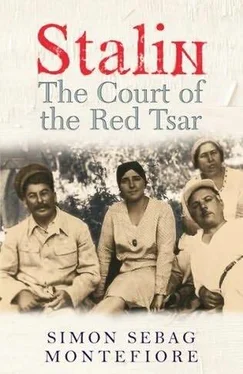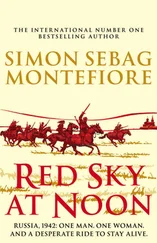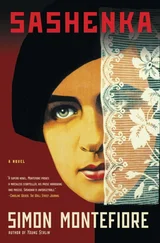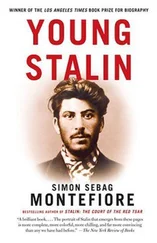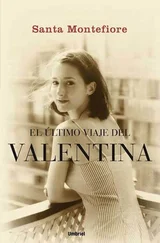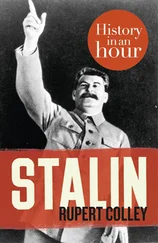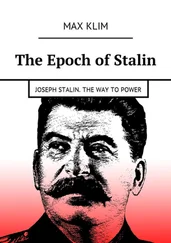During the night, the body was delivered to the Hall of Columns close to Red Square and the Kremlin. It was to be the scene of some of the great dramas and lying-in-states of Stalin’s rule. At eight the next morning, Yagoda joined the Funeral Commission.
The three smaller children were taken to the hall where Nadezhda Alliluyeva Stalin lay in an open casket, her round face surrounded by bouquets, her bruises exquisitely powdered and rouged away by Moscow’s macabre maestros. “She was very beautiful in her coffin, very young, her face clear and lovely,” recalls her niece Kira Alliluyeva. Zina Ordzhonikidze, the plump half-Yakut wife of the irrepressible Sergo, took Svetlana’s hand and led her up to the coffin. She cried and they rushed her out. Yenukidze comforted her, despatching her back to Zubalovo. She only learned of the suicide a decade later, incongruously from the Illustrated London News .
Stalin arrived accompanied by the Politburo, who stood guard around the catafalque, a duty to which they were to grow accustomed in the deadly years ahead. Stalin was weeping. Vasily left Artyom and ran forward towards Stalin and “hung on to his father, saying, ‘Papa don’t cry!’” To a chorus of sobs from Nadya’s family and the hardmen of the Politburo and Cheka, the Vozhd approached the coffin with Vasily holding on to him. Stalin looked down at this woman who had loved, hated, punished and rejected him. “I’d never seen Stalin cry before,” said Molotov, “but as he stood there beside the coffin, the tears ran down his cheeks.”
“She left me like an enemy,” Stalin said bitterly but then Molotov heard him say: “I didn’t save you.” They were about to nail down the coffin when Stalin suddenly stopped them. To everyone’s surprise, he leaned down, lifted Nadya’s head and began to kiss her ardently. This provoked more weeping.
The coffin was carried out into Red Square where it was laid on a black funeral carriage with four little onion domes on each corner holding an intricate canopy, a cortège that seemed to belong in Tsarist times. There was an honour guard marching around it and the streets were lined with soldiers. Six grooms in black led six horses and ahead, a military brass band played the funeral march. Bukharin, who was close to Nadya but had tainted her politically, offered his condolences to Stalin. The widower insisted strangely that he had gone to the dacha after the banquet; he was not in the apartment. The death was nothing to do with him. So Stalin propagated an alibi.
The procession set off through the streets, the public held far back by police. Here was the first of many funerals in which the cause of death was concealed from most of the mourners. Stalin walked between Molotov and the shrewd, hawk-eyed Armenian Mikoyan, themselves flanked by Kaganovich and Voroshilov. Pauker, resplendent in his uniform, belly buttressed by his invisible corset, kept pace to the side. Vasily and Artyom walked behind them along with the family, the cream of the Bolshevik movement and delegates from Nadya’s Academy.
Her mother Olga blamed Nadya: “How could you do this?” she addressed her absent daughter. “How could you leave the children?” Most of the family and leaders agreed, and sympathized with Stalin.
“Nadya was wrong,” declared the forthright Polina. “She left him at such a difficult time.”
Artyom and Vasily fell behind the band and lost sight of Stalin. It has variously been claimed that Stalin either did not go to the funeral or that he walked all the way to the Novodevichy Cemetery. Neither is true. Yagoda insisted that it was not safe for Stalin to walk the whole route. When the procession reached Manege Square, Stalin, along with the deceased’s mother, were driven to the cemetery.
At Novodevichy, Stalin stood on one side of the grave, and the two boys, Vasily and Artyom, watched him from the other. Bukharin spoke, then Yenukidze announced the main speaker: “It was so difficult,” Kaganovich remembered, “with Stalin there.” The Iron Commissar, more used to tub-thumping broadsides, delivered his oration in that special Bolshevik language: “Comrades, we are at the funeral of one of our best members of our Party. She grew up in the family of a Bolshevik worker… organically connected with our Party… she was the devoted friend of those who ruled… fighting the great struggle. She distinguished herself by the best features of a Bolshevik—firmness, toughness in the struggle…” Then he turned to the Vozhd : “We’re close friends and comrades of Comrade Stalin. We understand the weight of Comrade Stalin’s loss … We understand we must share the burdens of Comrade Stalin’s loss.”
Stalin picked up a handful of soil and threw it onto the coffin. Artyom and Vasily were asked to do the same. Artyom asked why it was necessary. “So she can have some earth from your hand,” he was told. Later Stalin chose the monument that rested over her grave, with a rose to remember the one she wore in her hair and proudly emblazoned with the sacred words: “Member of the Bolshevik Party.” For the rest of his life, Stalin ruminated on her death. “Oh Nadya, Nadya, what did you do?” he mused in his old age, excusing himself: “There was always so much pressure on me.” The suicide of a spouse usually affects the surviving partner, often leaving the bitter taste of guilt, betrayal and, above all, desertion. Nadya’s abandonment of Stalin wounded and humiliated him, breaking one more of his meagre ties to human sympathy, redoubling his brutality, jealousy, coldness and self-pity. But the political challenges of 1932, particularly what Stalin regarded as betrayals by some of his comrades, also played their part.
“After 1932,” Kaganovich observed, “Stalin changed.” 5
* * *
The family watched over Stalin, letting themselves into the apartment in case he needed anything. One night, Zhenya Alliluyeva visited him but there was no sound. Then she heard an ugly screeching and found the Vozhd lying on a sofa in the half-light, spitting on the wall. She knew he had been there a very long time because the wall was dripping with glistening trails of spit.
“What on earth are you doing, Joseph?” she asked him. “You can’t stay like that.” He said nothing, staring at the saliva rolling down the wall. 6
At the time, Maria Svanidze, the wife of Alyosha, his former brother-in-law, who now began to keep a remarkable diary, [52] Maria “Marusya” Svanidze was to become a vital figure in Stalin’s entourage: her handwritten diary, which is one of the most revealing documents of the thirties, was preserved by Stalin in his own archive.
thought Nadya’s death had made him “less of a marble hero.”
In his despair, he repeated two questions: “Never mind the children, they forgot her in a few days, but how could she do this to me?” Sometimes he saw it the other way round, asking Budyonny: “I understand how she could do this to me, but what about the children?” Always the conversation ended thus: “She broke my life. She crippled me.” This was a humiliating personal failure that undermined his confidence. Stalin, wrote Svetlana, “wanted to resign but the Politburo said, ‘No, no, you have to stay!’”
He swiftly recovered the Messianic confidence in his mission: the war against the peasants and his enemies within the Party. His mind strayed onto the newly arrested Eismont, Smirnov and Riutin whose “Platform” had been found in his wife’s room. He was drinking a lot, suffering insomnia. A month after her death, on 17 December, he scrawled a strange note to Voroshilov: “The cases of Eismont, Smirnov and Riutin are full of alcohol. We see an opposition steeped in vodka. Eismont, Rykov. Hunting wild animals. Tomsky, repeat Tomsky. Roaring wild animals that growl. Smirnov and other Moscow rumours. Like a desert. I feel terrible, not sleeping much.” This letter shows how disturbed Stalin was after Nadya’s death. It reeks of drink and despair.
Читать дальше
